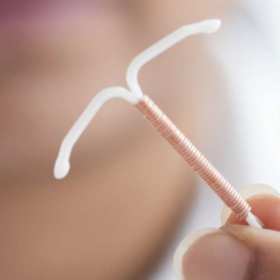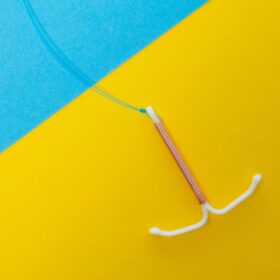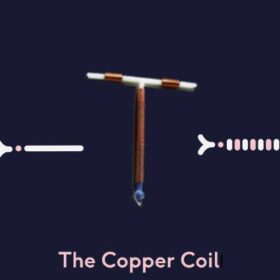
GyneFix: Everything you need to know
In this article
What's the lowdown?
The GyneFix is made up of tubes of copper wrapped around a thread that sits in the uterus (womb) and it’s completely frameless.
It lasts for 5 years and is 99% effective and it’s non hormonal as it releases copper into your womb to prevent pregnancy.
It’s the third in the copper coil trilogy and works in a similar way to the copper coil (IUD) and the IUB Ballerine.
Users may prefer this option as it’s smaller and more flexible than the T-shape we know with the IUD. GyneFix also fits all types of uterus shapes, especially those with smaller uteruses.
The GyneFix is inserted with a pre and post insertion ultrasound to avoid risk of perforation and removed by finding the thread in the cervical canal and pulling it out – but Dr Becky isn’t 100% on this removal process.
The makers of the Gynefix have confirmed that they have begun procedures to re-enter the UK market.

What is the GyneFix?
The GyneFix is a type of copper contraception that is frameless and works to prevent pregnancy by releasing copper into the womb, similarly to the IUD (copper coil) and IUB Ballerine.
There are two types of GyneFix, the GyneFix 200, with four copper sleeves and the GyneFix 330, with six copper sleeves¹.
What is the GyneFix made of?
The GyneFix is made of a non-biodegradable suture thread made of surgical 00 monofilament polypropylene (AKA a type of plastic) on which the copper tubes are threaded.
How long does the Gynefix last?
It lasts for 5 years and is 99% effective. This is similar to other traditional IUDs that can protect from pregnancy for 5-10 years, depending on the brand, which are all also 99% effective.
How is the GyneFix inserted and is it painful?
It lasts for 5 years and is 99% effective. This is similar to other traditional IUDs that can protect from pregnancy for 5-10 years, depending on the brand, which are all also 99% effective.
The GyneFix should be inserted with a pre and post insertion ultrasound. This is to measure the womb cavity and to ensure it’s placed properly within the uterus to avoid risk of perforation. The person who fits the Gynefix must have all the training and ultrasound experience².
We spoke to the research team at GyneFix HQ. Dr. Wildemeersch, a researcher in intrauterine contraception, compared T-IUD insertions to walking into a shoe store, picking out any box and saying “well these are my shoes now, I sure hope they fit’. The Gynefix insertion procedure means that you are making sure your contraception is the correct fit for you beforehand.
It is inserted with a thin tube that passes the cervical canal (the gap in the neck of the womb). To anchor it, a knot is tied at the end of the thread and implanted into the tissue at the top of the uterus. The knot ensures it stays in place.
This diagram explains how the tube is inserted into the uterus:
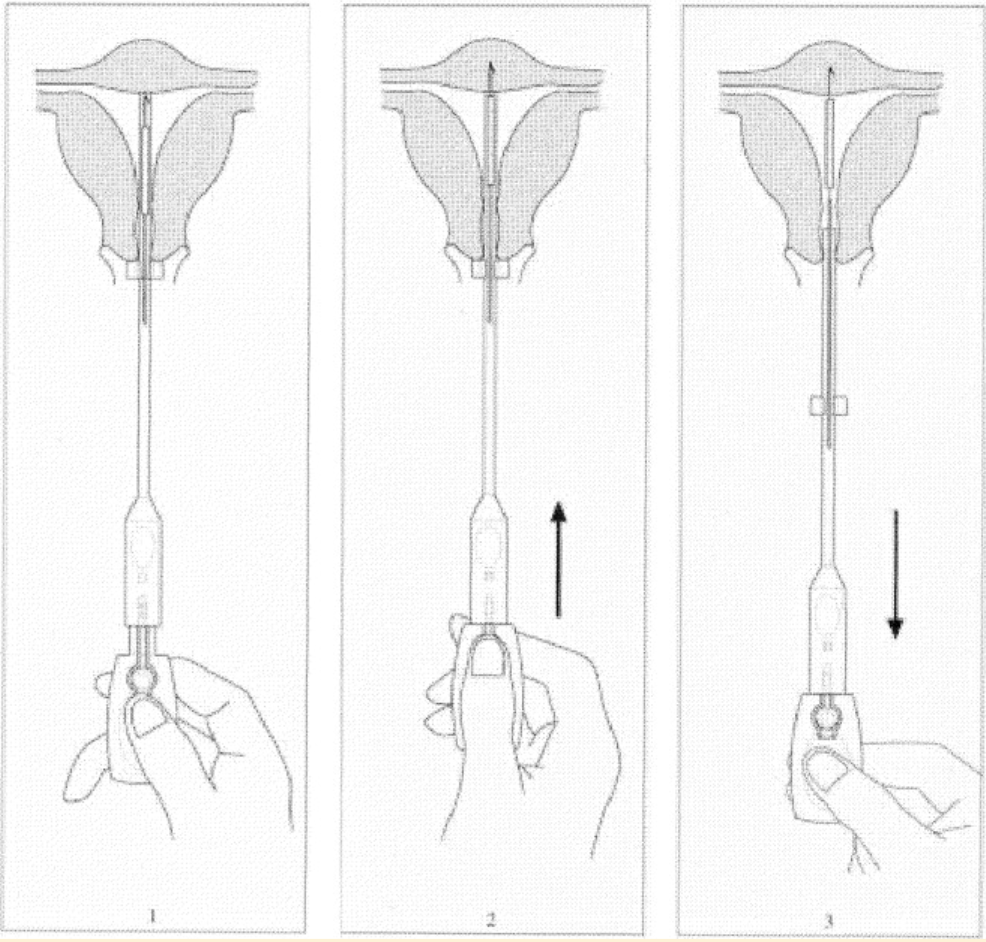
Maarten De Winter from the research team at GyneFix HQ told us “Insertion is not more painful than other IUDs as patient comfort is included in our training. We often hear from gynaecologists that have completed the training that it’s actually very easily placed, just a little different from other IUDs,”.
Due to this way of fitting, there is a small risk of perforation (forming of a hole in your uterus/bowels). This occurs when the tissue at the top of the uterus hasn’t been properly measured for thickness which is why it is essential to have a pre insertion ultrasound.
A research study did find one perforation was noted in 3,000 fittings³. Make sure to talk with the person who fits your device so you are fully informed of the risks associated with insertion.
After insertion, there will be an ultrasound to make sure it’s been placed correctly. You are also advised to not have sex for 14 days, as well as to not use tampons and menstrual cups for 2 months. There should be a 4-8 week follow up review.
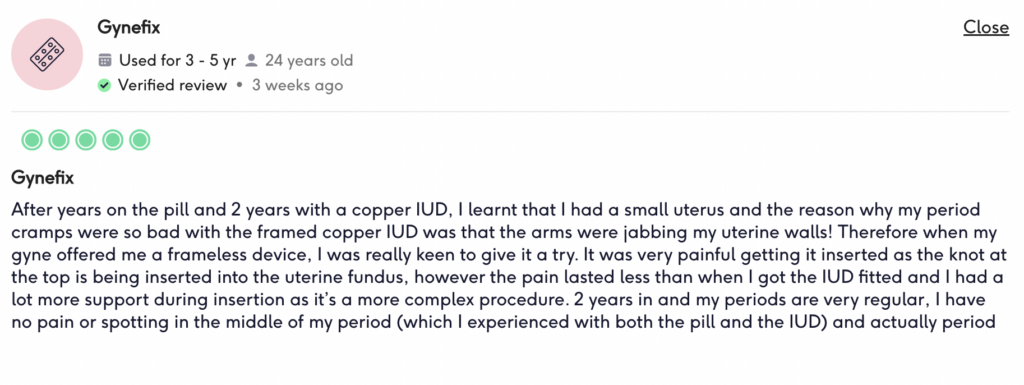
Is GyneFix available in the UK?
It has been on the market for 25+ years but it is unfortunately very limited in the UK due to pricing issues. The makers of the GyneFix recently confirmed that they have begun procedures to re-enter the UK market.
How is the GyneFix removed?
To remove the GyneFix, the gynecologist, GP or nurse has to retrieve the thread in the cervical canal with a thin alligator forceps and pull on the frameless thread in one swift pull.
Research did find that ‘removal required significantly more force for the GyneFix’⁴ than the force used to remove the IUD. The force level differs due to the nature that it is attached to the fundal tissue. That said, there was no ‘significant difference in pain perceived by women during removal’.
Does GyneFix cause heavy periods compared to the Copper IUD?
Everyone may experience the GyneFix differently and the impact on bleeding varies from user to user. With traditional copper coil users, 65% of Lowdown reviewers report heavier bleeds.
One study in Belgium found that for those with the GyneFix 200 bleeding did not change from their baseline over 31 months⁵. However, this doesn’t mean bleeding reduces using this method and if bleeding is something you are concerned about, the hormonal IUS may be a better option as many users find that their periods are lighter or stop altogether.
What’s the difference between the Copper IUD and the Gynefix?
The main difference between the copper IUD and the GyneFix is shape. As a contraceptive, it works in exactly the same way.
The IUD has a T-shape while GyneFix is frameless. Users of the GyneFix prefer this option as it’s smaller, flexible and fits all types of uterus shapes, especially those with smaller uteruses.
The makers of the GyneFix told us “smaller device and less copper = More patient comfort”.
The GyneFix has only been reviewed 3 times on The Lowdown at the time of writing, but has received a 5 star overall review. Side effects reported have included heavier menstrual cycles for the first few months and spotting⁶. Copper IUD users also report heavier bleeds and spotting.
From our limited review data of GyneFix, the contraceptives are pretty similar but the insertion and shape are the only distinct differences.
Have you used the GyneFix? We’d love to hear from you and your experience!
Our medical review process
This article has been medically reviewed for factual and up to date information by a Lowdown doctor.




